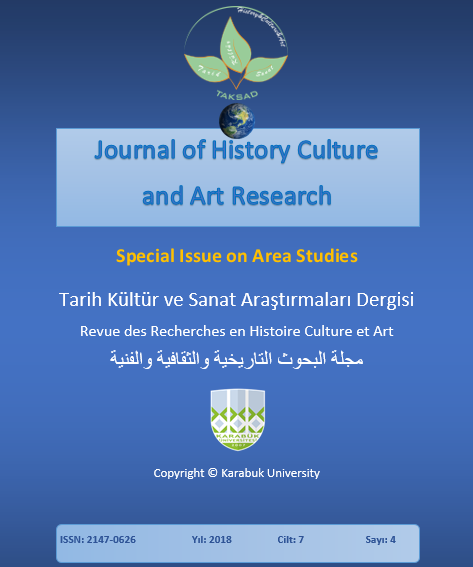Formation of Communication Facilities in the Media
DOI:
https://doi.org/10.7596/taksad.v7i4.1807Keywords:
Communication, Post-industrial society, Speech security, Media text, Connotation, Information background.Abstract
The article concerns the factors of the formation of communicative attitudes, linguistic security, and speech aggression in the media. Studying the language characteristics of modern society, the authors analyze regressive phenomena in the information and communication environment. The influence of journalistic texts on the worldview of readers of the modern press is manifested in the changing information background. Of particular interest is the influence of connotations on the media text and on postindustrial society in general. Considering the communicative process in the media taking into account the linguistic traditions, the connection of generations, ethnic unity, the authors identify specific ways of communication that evolve under the influence of a changing information environment. The relevance of the study consists in revealing the forms of manifestation of speech aggression in the texts of print media. Given that the perception of media text takes into account background information, it is assumed that negative communication patterns are being formed in the society, with special focus on the examples containing a violation of communicative and ethical norms. The practical importance of the study of the formation of communicative attitudes in the media is connected with the careful study of journalistic materials and the definition of the quality characteristics of means of influence on the audience of the media.
References
Bala Kiran (2014). Social Media and Changing Communication Patterns. Article -3 Global Media Journal-Indian Edition Sponsored by the University of Calcutta/www.caluniv.ac.in ISSN 2249 - 5835 Summer Issue/June 2014/Vol. 5/No. 1.
Enina L. (2000). Speech Agression and Speech Tolerance in Mass Media. The Materials of Researches of Theoretical and Practical Conference “Russian Press in Multicultural Society: Tolerance and Multiculturalism as the Benchmark of Professional Conduct”. М., [Electronic Resource]. URL: http://www.tolerance.ru/RP-rech-agress.php?PrPage=MKO (Access Date: October 16, 2017)
Fog A. (2017). The supposed and the real role of mass media in modern democracy. Retrieved 4 April 2012. [Electronic Resource] http://www.agner.org (Access Date: 14/10/2017).
For 2 years in Russia sharply increased the number of linguistic expertise in connection with the incitement of hostility and discord – exper. Parlamentskaya Gazeta, February 23, 2016. [Electronic Resource]. URL: https://www.pnp.ru/news/detail/118701 (Access Date: February 24, 2017)
Goryacheva О. N. & Gunko О. G. (2016). Linguistic Security – the Pledge of Tolerance in the Media. Social-Economic and Technical Systems: Investigation, Projecting, Optimization. Nab. Chelny. – No. 6 (73); 42-50.
Khaleeva I. I. (2006). Linguistic Security of Russia. The Herald of the Russian Academy of Sciences. Volume 76. No 2; P. 104–111.
Kozhina M. N. (2016). Stylistic Encyclopedia. The 2nd. edition, revised and corrected. М.: Flinta: Nauka, 696 p.
Kuznetsov S. A. (1998). Large Explanatory Dictionary of the Russian Language. SP.: Norint, Issued in Author’s Editorial Office in 2014. [Electronic Resource]. URL: http://www.gramota.ru (Access Date: October 20, 2017)
Lisitskaya L. G. (2009). Communicative Norms and Linguistic Security of Modern Media Texts. The ASU Press. Issue 1. [Electronic Resource]. URL: http://cyberleninka.ru/article/n/kommunikativnye-normy-i-lingvisticheskaya-bezopasnost-sovremennyh-mediatekstov (Access Date: October 06, 2017)
Macnamara J. (2016). Which media set the news agenda: Mass media or/and social media? iSentia, 2014 Retrieved from: http://www.isentia.com/assets/blog/special/isentia_whitepaper_layout_in ternational_d1.pdf. (Access Date: 24/07/2016).
Payel Sen Choudhury (2011). Media in Development Communication. Global Media Journal. Indian Edition/ISSN 2249-5835 Winter Issue. December 2011 Vol. 2/No.2 [Electronic Resource]. URL: http://www.caluniv.ac.in (accessed on 10.10.2017)
Petrova N. E. (2011). The Language of Modern Media. Means of Verbal Agression: Manual. М.: Nauka. 160 p.
Shcherbinina Y. V. (2004). The Russian Language and the Ways of its Overcoming: Manual for Universities. Y. V. Shcherbina. М.: LitRes, 160 p.
Srisaracam Sakulsri (2017). Analysis of Relationship between Social Media Conversation and Mainstream Coverage to Mobilize Social Movement. World Academy of Science, Engineering and Technology, Vol:11, No:8; P.1947-1954.
Strokova Y. А. (2014). Lexical Means of Verbal Agression in Television News. Mediascope. Issue 1. [Electronic Resource]. URL: http://www.mediascope.ru/node/1488 (Access Date: September 16, 2017)
Vorontsova Т. А. (2010). Verbal Agression as an Intrusion into Cognitive Space. Т.А. Vorontsova. Socio- and Psycholinguistic Studies. No. 14; P. 91–99.
Zavialova О. N. (2017). Speech or Language Agression in Russian. I Am Russia. [Electronic Resource]. URL: http://iamruss.ru/rechevaya-ili-yazykovaya-agressiya-v-russkom-yazyke/ (Access Date: August 14, 2017)
Downloads
Published
How to Cite
Issue
Section
License
All papers licensed under Creative Commons 4.0 CC-BY.- Share — copy and redistribute the material in any medium or format
- Adapt — remix, transform, and build upon the material for any purpose, even commercially.
Under the following terms:
Attribution — You must give appropriate credit, provide a link to the license, and indicate if changes were made. You may do so in any reasonable manner, but not in any way that suggests the licensor endorses you or your use.
- No additional restrictions — You may not apply legal terms or technological measures that legally restrict others from doing anything the license permits.







